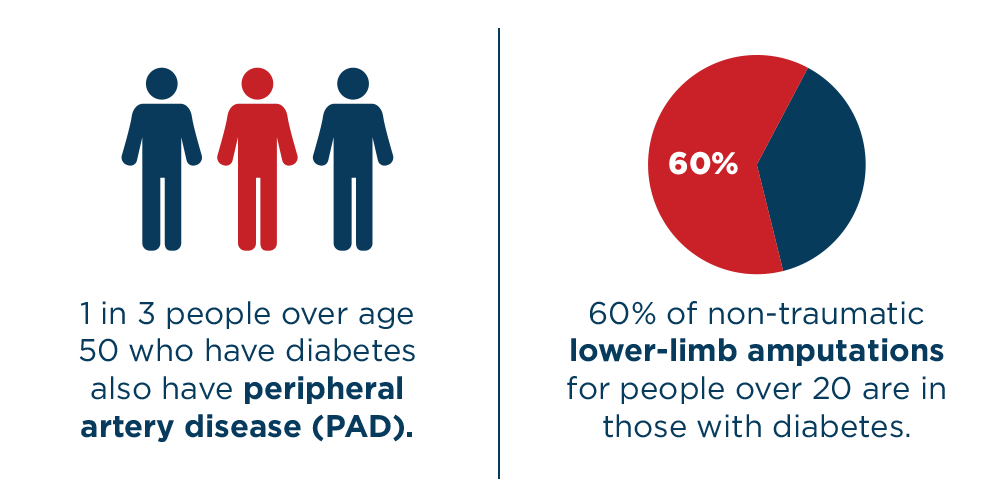Many healthcare professionals consider diabetes to be at epidemic levels in the U.S. According to the American Diabetes Association (ADA), almost 30 million Americans suffer from diabetes, which affects health and quality of life.
As a physician who treats peripheral artery disease (PAD), Dr. Russell Lam is especially concerned about its link to diabetes. The ADA estimates that about one out of every three people age 50+ with diabetes also has peripheral artery disease. Though many people are aware that diabetes is a major contributing factor to heart attack and stroke, it is less commonly known that the risk of heart attack and stroke are directly related to PAD.

When PAD and diabetes both exist in a patient, they most commonly endure the following diabetic complications:
- Severe leg pain
- Severe leg cramps when walking
- Wounds on feet that will not heal
Diabetes & Blood Sugar
To understand how diabetes affects the blood vessels, it’s important to have a basic understanding of what causes diabetes.
The body produces a hormone called insulin, which converts the food we eat into glucose or sugar. When you have diabetes, the body either doesn’t produce enough insulin or can’t use the insulin properly.
Over time, high levels of glucose can build up in the bloodstream, causing atherosclerosis – a condition in which narrowing or blockage occurs in the arteries. This leads to reduced levels of blood and oxygen reaching the tissues and organs, causing further harm to the body.
What Can You Do To Lower Your Risk?
One of the most important steps to reducing the risk of diabetic vascular disease is making sure your blood sugar levels are always within safe, acceptable levels. Maintaining healthy body weight and regular exercise can help control blood sugar levels as can avoiding smoking and working with your doctor to manage high blood pressure and high cholesterol.
In addition to taking steps to manage diabetes better, it’s vital that patients with diabetic vascular disease be vigilant about caring for their feet. Proper foot care is essential in preventing foot sores, which can lead to amputation.
- Check your feet daily for cuts, blisters, sores or swelling; use a mirror to see the bottom of the feet
- Protect the skin by gently washing and drying your feet daily, then applying lotion
- Keep the toenails trimmed or ask the doctor to trim them
- Don’t walk barefoot; wear comfortable well-fitting shoes
- Avoid subjecting your feet to extreme temperatures, especially hot water in the bathtub.
Treatment for Diabetic Vascular Disease
Sometimes standard treatment for PAD, such as angioplasty and stenting, or peripheral artery bypass surgery, may be more difficult for people with diabetic vascular disease. Dr. Lam now offers an FDA-approved alternative – Spectranetics excimer laser atherectomy.
Learn more about laser atherectomy
PAD and diabetes are challenging conditions, but with proper treatment and management, good health can be maintained.

